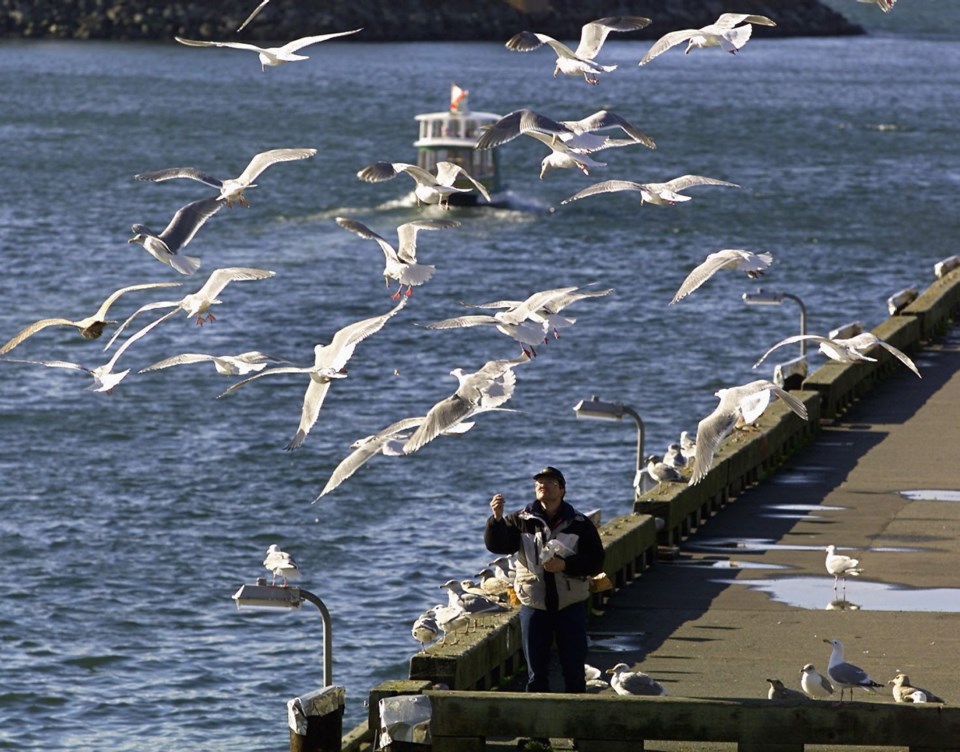‘Ancestors of birds and ancestors of humans last successfully mated and hatched offspring together some 320 to 340 million years ago,” she says. “Both lineages evolved very differently after that. Yet, despite that, birds and humans have in common a number of behaviours and types of intelligence.”
The list of similarities includes vocal learning and communication, the ability to make and use tools to solve problems, a well-developed capacity for spatial, temporal and social memory, an ability to track and navigate social relationships and hierarchies, and even a sense of esthetics.
“Although our brains evolved independently of each other and are structured very differently,” she peers owlishly at me, “they have developed similar solutions that enable each of us to respond to the pressures of the environments we live in.”
And that, she says, is why she and her colleagues are attending the Big Bird Meeting in Vancouver this week. Considered the oldest and most prestigious meeting for bird scientists, the International Ornithological Congress occurs every four years. Since first being held in Austria, in 1884, this is the first time it has been held along North America’s Pacific Flyway.
Featuring research presentations, meetings, social events and tours, it’s a chance for birds of all feathers to get together to share research and insights, discuss collaborations, renew friendships, take students under their wings and take in the sights.
About 2,000 bird scientists are expected to attend.
My friend’s research focuses on speech and song development in both animal groups. Her keynote presentation describes how activity by 50 genes in humans’ specialized speech-learning brain circuitry and in songbird, parrot and hummingbird brains’ song regions have converged to enable both groups to learn and communicate vocally at very sophisticated levels.
She says she’s looking forward to learning about her colleagues’ work on human speech.
“A little brown bird by the name of Bewick Wren tells me the chickadees have managed to decode and translate some common human phrases.” She swivels her head 270 degrees in awe. “For example, when humans say: ‘Hmm — bacon,’ they’re talking about high-protein, high-fat food. ‘Pish-pish-pish’ means they have seeds in their hands for you. When they yell: ‘Learn to drive, jerk!’ that’s a vocal response to a threat — in chickadee, you’d say: ‘chick-a-dee-dee-dee-dee-dee.’ When they say: ‘Hey, baby,’ guess what that means? It’s a mating call — the same call chickadees use every spring to woo.”
She hoots. “Who knew? Who knew?”
Other presentations include:
• Nothing to Crow About: New Caledonian crows discuss tool use among Vancouver Island’s human populations.
• Voici le Plumage de ma Tante: Wood Ducks speak of the difference between male and female mating plumage in the human species.
• Birds Without Wings: Red knots describe how the lack of viable wings has long challenged humans seeking to migrate in flocks.
• Fowled Gut: Glaucous-winged gulls report on the risks and opportunities of human garbage and the recent decline in seagull populations on the B.C. coast.
• Enough with the Dead Ducks Already: Mallards speak about how human language has to change if humans are ever to value other species. The ducks call for a ban on belittling expressions such as dead duck, funny duck, lame duck, duck soup, ugly duckling, water off a duck’s back and getting your ducks in a row.
• Fouling Its Own Nest: Ostriches present data on the human ability to stick their heads in the sand about how their activities are endangering bird species around the world.
A bird festival, expo and art show also run this week, providing something for all birds to enjoy. Parakeets will give lessons on how to parrot humans. Bowerbirds will exhibit their found-object art installations. Peafowl from Surrey will provide pointers on how to successfully invade and raise nestlings in human communities while being as annoying and noisy as possible.
But Olive-sided Flycatcher is coming for the party — “Quick, three beers!” he shouts to us as he flies past.
The congress also presents research on birds by human eggheads. Find more information on that at iocongress2018.com



